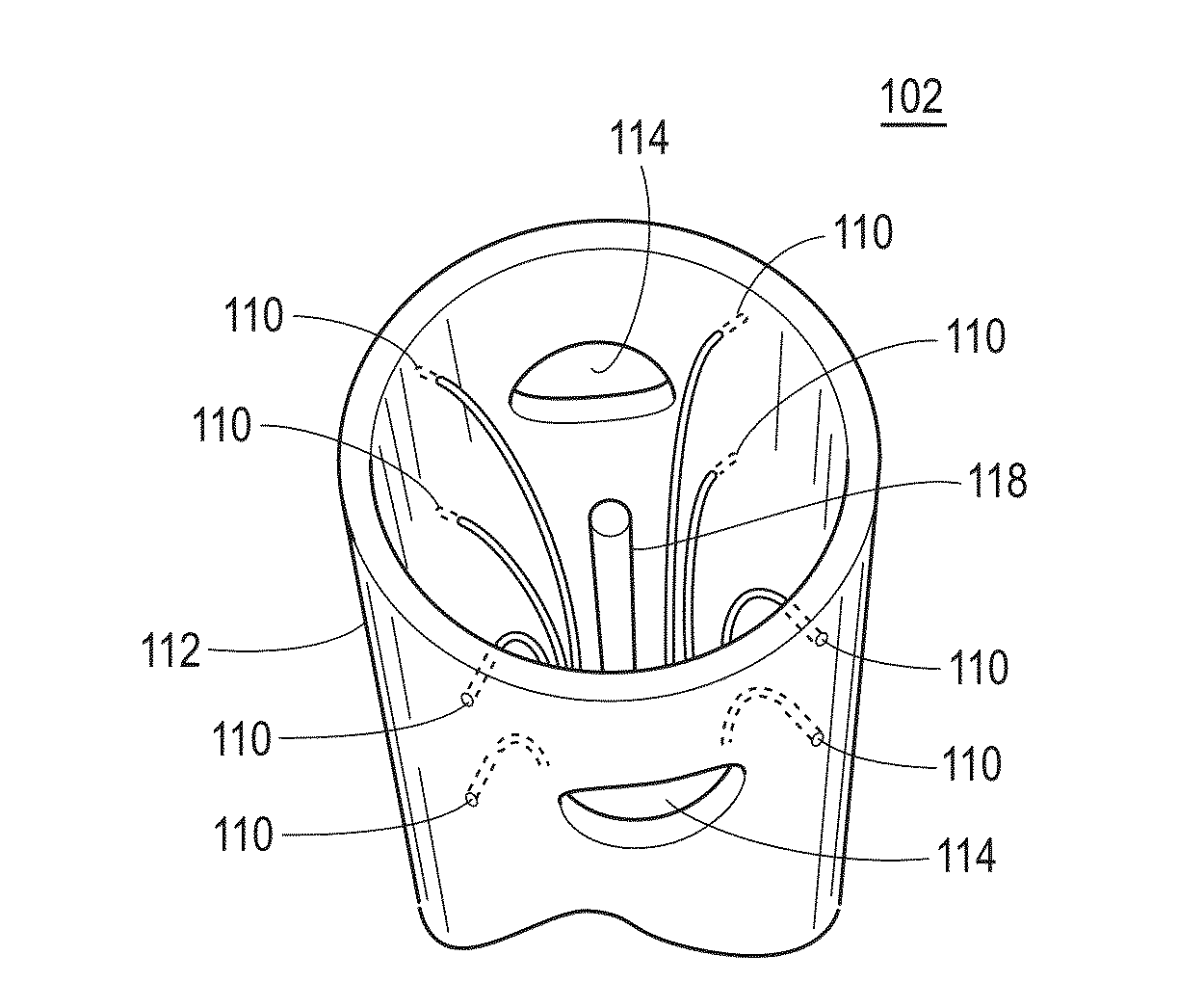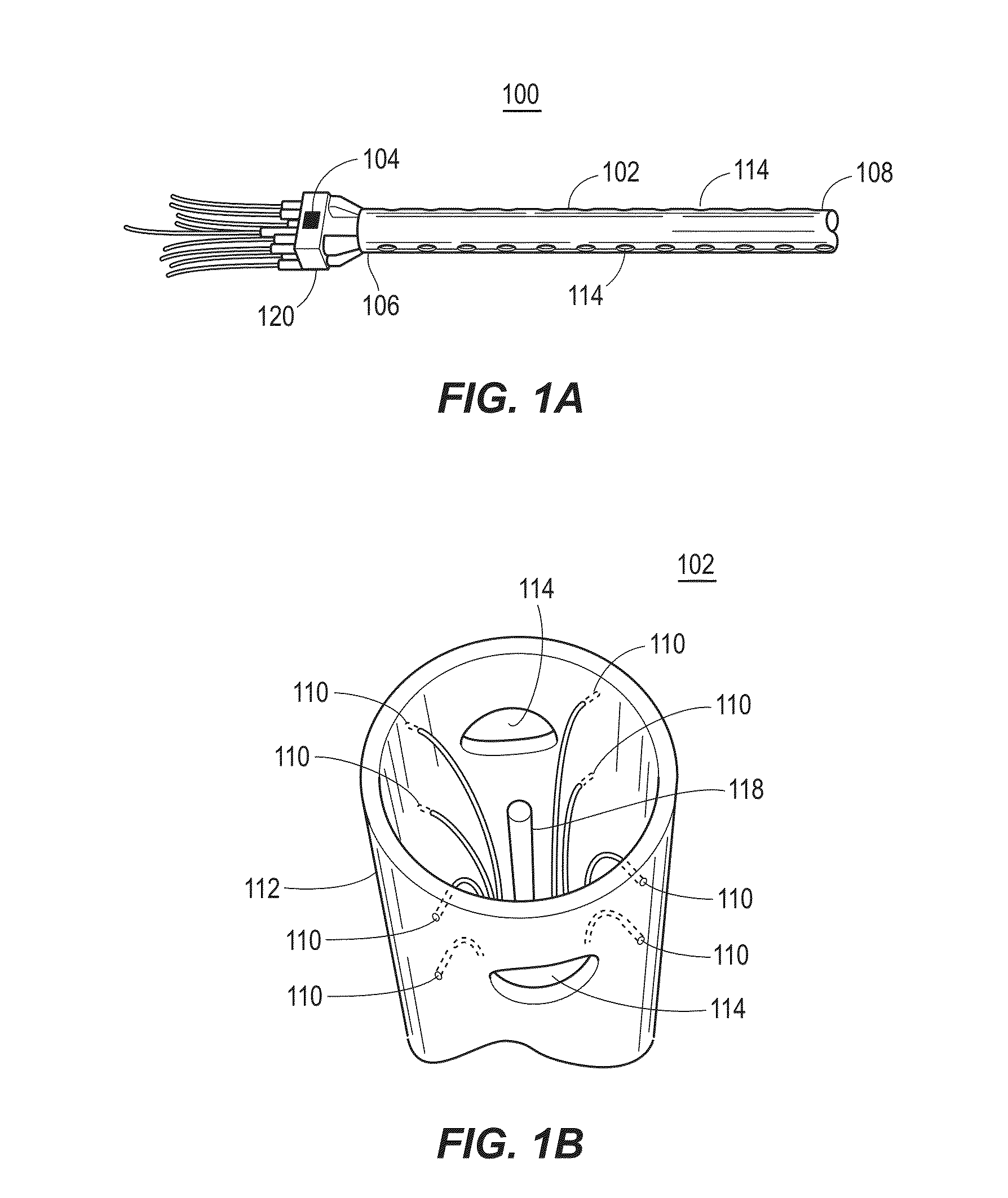Catheter and method to localize ectopic and reentrant activity in the heart
a technology of ectopic and reentrant activity and catheter, which is applied in the field of catheter, can solve the problems of destroying vast portions of the atria, limiting the success rate of pulmonary vein isolation in patients with persistent af, and affecting the detection of ectopies. , to achieve the effect of facilitating the detection of ectopies
- Summary
- Abstract
- Description
- Claims
- Application Information
AI Technical Summary
Benefits of technology
Problems solved by technology
Method used
Image
Examples
example 1
[0056]In an example implementation, a catheter, e.g., catheter 102, was inserted into a solution-filled cavity of the left atrium (LA; no contact with the walls) of a sheep experience atrial fibrillation (AF). Electrical signal data was collected and recorded, specifically voltage time series data, at each of the 8 outer electrodes functioning as unipolar electrodes. A common reference signal was constructed from joining 4 (or 3; depending on availability), of opposing electrodes, i.e., vortices, through a high resistance connection (i.e., a local Wilson central terminal configuration). FIG. 2A shows sample data collected in the 8 vortices electrodes during AF in the sheep with a central HCP electrode maintained at a 0V difference with the grounded heart, i.e., short circuited with the heart. In the example shown in FIG. 2B, filtering is done on the electrical signal data, by a processing device. For example, the original data was passed through a bandpass filter and filtered at 1-2...
example 2
[0062]In an example implementation of a catheter like that of catheter 300, cardiac extracellular electrical activity was recorded at 8 electrodes, for 8 vertices of a cube. In this example, the edge length of that cube was 1 cm. The spacing distance is determined from the size of the catheter. As with the catheter 102, the catheter 300 the space between the vertices electrodes is empty and free to contain the volume conductor.
[0063]In an example implementation, data was acquired from by inserting the catheter into a solution-filled cavity of the left atrium (“LA”; no contact with the walls) of a sheep during pacing sinus rhythm and atrial fibrillation, similar to that of Example 1 above. Voltage time series were recorded at each of the 8 electrodes 302 as unipolars with a common reference signal constructed from joining 4 (or 3; depending on availability), of opposing vortices through a high resistance connection, e.g., like a Wilson terminal. FIG. 7 shows sample data collected dur...
PUM
 Login to View More
Login to View More Abstract
Description
Claims
Application Information
 Login to View More
Login to View More - R&D
- Intellectual Property
- Life Sciences
- Materials
- Tech Scout
- Unparalleled Data Quality
- Higher Quality Content
- 60% Fewer Hallucinations
Browse by: Latest US Patents, China's latest patents, Technical Efficacy Thesaurus, Application Domain, Technology Topic, Popular Technical Reports.
© 2025 PatSnap. All rights reserved.Legal|Privacy policy|Modern Slavery Act Transparency Statement|Sitemap|About US| Contact US: help@patsnap.com



